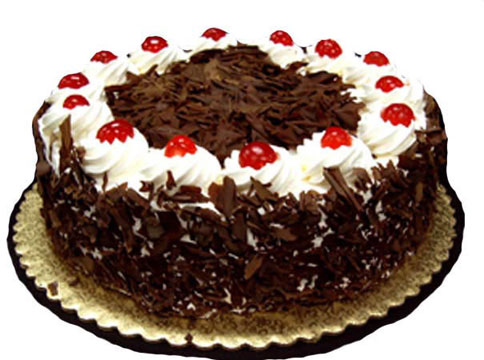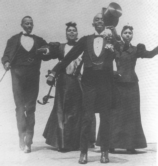\ˈkāk-ˌwȯk\
Whoa.
If Golliwogs and minstrelsy are being invoked, then a cakewalk, considered in its full context, is probably more than a sugar-frosted walk in the park.
A little research was clearly in order.
It turns out the cakewalk has its roots in the American South before the Civil War. Most sources seem to agree that it originated among slaves as a rest-day entertainment in which slaves made fun of their owners’ performance at formal balls. These parodic dances involved all kinds of exaggerations of ballroom steps: extravagant bows and curtseys, high kicks, nose-in-the-air mincing and strutting promenades.
When slave owners got wind of these performances, some thought they were hysterically funny and promptly co-opted them. These owners would bring slaves into the house and have them dress up in fancy clothes and dance for assembled guests who got to act as judges. The couple with the greatest style or the fanciest steps would win a cake as a prize. It’s not clear whether the owners realized the extent to which they were being mocked. The slaves, however, were unambiguous on this point; at the same time many also remembered the dances as a rare opportunity for fun (and cake) in an otherwise grueling life. [Wikipedia has some excerpts from oral histories given by former slaves—and there are lots more in this really interesting 1981 article from the Journal of Social History.]
After Emancipation, the cakewalk persisted in the black community as part of dance parties and socials. This appears to be when the idea of a “cakewalk” as “something easy” originated—not because the dance is easy but it looks easy and often graceful, and because it was associated with weekends and leisure.
It also became a staple of minstrel shows. Some of these were created by whites in blackface providing sentimental accounts of the “good old days” down on the plantation. And some of them were created by African American artists looking to make a living as performers in post-Reconstruction America. And many many more were an uneasy mix of the two.
| The Philadelphia Centennial Exhibition in 1876 featured a group of African American dancers performing cakewalks in a faux plantation setting, and professional dance troupes played to crowds in major cities across the country. Stage plays (and later, movies) of Uncle Tom’s Cabin almost always included a cakewalk troupe as part of the entertainment. |
By the turn of the 20th century the dance had become wildly popular among the general public; it was the first American social dance craze and the first to cross over from the black community and gain widespread popularity among whites.
The dance ultimately fell out of favor in the 1920s but cakewalks are still around in the form of the carnival game beloved in church basements and PTA fundraisers coast to coast. No dancing or skill involved: this is basically a mashup of a raffle and musical chairs where the winner goes home with a cake.
Sugar-frosted? No. Walk in the park? No. A perfect slice of the bittersweet cake that is American history? Yeah, that’s about right.



 RSS Feed
RSS Feed